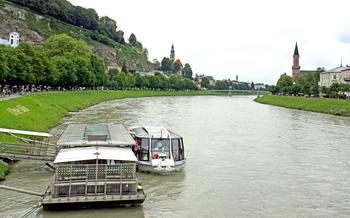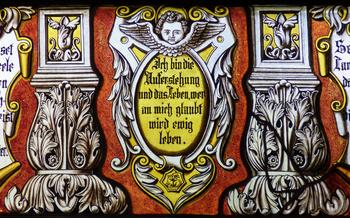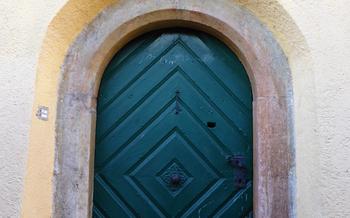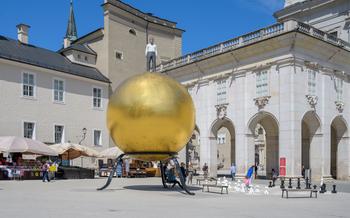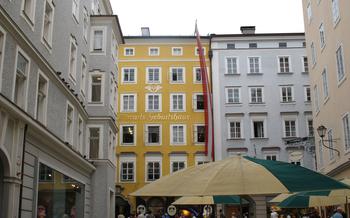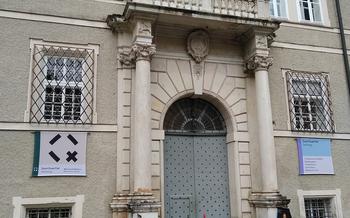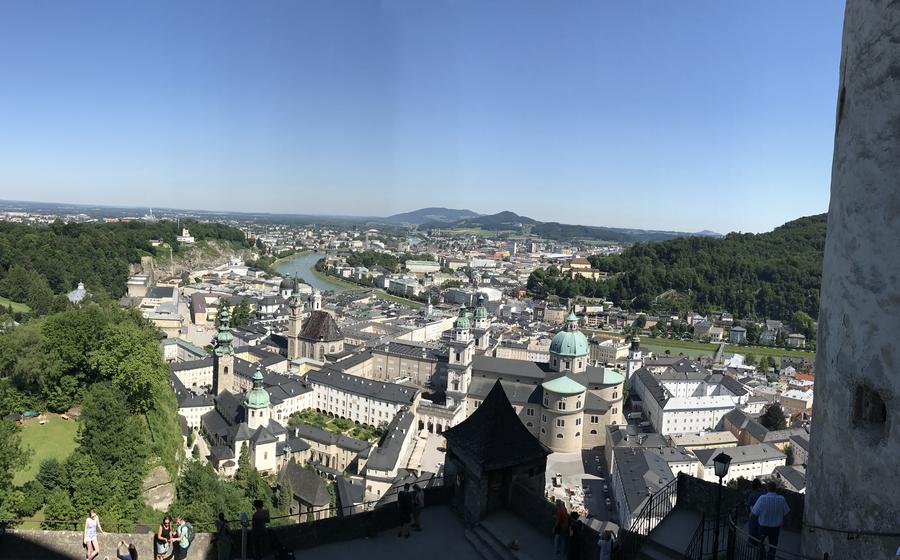
Michael Haydn Museum
- Michael Haydn Museum
- Life of Michael Haydn
- Mozart's Influence on Haydn
- Exploring the Museum
- Planning Your Visit
- Must-See Exhibits
- Haydn's Compositions
- Haydn's Legacy
- Haydn's Impact on Classical Music
- Haydn's Influence on Mozart
- Haydn's Enduring Popularity
- Haydn's Family
- Salzburg's Musical Heritage
- Accommodation near the Museum
- Transportation to the Museum
- Food and Drinks
- Things to Do Nearby
- Insider Tip
Michael Haydn Museum
In the heart of Salzburg's musical legacy lies the Michael Haydn Museum, a treasure trove dedicated to the life and works of one of the city's most celebrated composers. Step into the realm of Michael Haydn, a prolific and talented musician who, despite being overshadowed by his elder brother, Joseph Haydn, left an indelible mark on the world of classical music.
The museum, housed in the former St. Peter's Abbey, offers a comprehensive exploration of Michael Haydn's remarkable career. Delve into the history of the museum, tracing its origins from a small collection of artifacts to the comprehensive institution it is today. Discover the highlights of the collection, including original manuscripts, personal belongings, and musical instruments that bring Haydn's world to life.
Guided tours led by knowledgeable docents provide an immersive experience, shedding light on Haydn's creative process, his relationship with his brother, and his influence on the musical landscape of the 18th century. Special events, such as concerts, lectures, and workshops, offer unique opportunities to engage with Haydn's music and delve deeper into his legacy.
Life of Michael Haydn
Michael Haydn, born on September 17, 1737, in Rohrau, Austria, was the younger brother of the renowned composer Joseph Haydn. His early years were marked by a strong musical influence, as his father, Mathias Haydn, was a wheelwright and a respected local musician. Michael received his initial musical education from his father and older brother, who recognized his talent and encouraged him to pursue a career in music.
At the age of six, Michael Haydn entered the choir school at St. Stephen's Cathedral in Vienna, where he received a comprehensive musical education that included singing, playing various instruments, and studying music theory and composition. His talent and dedication quickly became evident, and he soon became a respected member of the choir.
After completing his studies at St. Stephen's Cathedral, Michael Haydn returned to Rohrau and began his career as a musician. He held various positions as a church organist and choir director in several towns and cities across Austria, gaining valuable experience and recognition for his musical abilities.
In 1762, Michael Haydn was appointed Kapellmeister (music director) at the Salzburg Cathedral, a position he held for over 40 years. During his tenure in Salzburg, he composed a vast amount of sacred and secular music, including masses, oratorios, symphonies, concertos, and chamber music. He also collaborated with his brother Joseph on several occasions, contributing to the latter's operas and other works.
Michael Haydn's compositional style was influenced by the Baroque and Classical periods, combining elements of both traditions to create his unique musical voice. His works are characterized by their melodic richness, harmonic clarity, and contrapuntal craftsmanship. He was also known for his ability to write music that was both accessible to a wide audience and technically demanding for performers.
Throughout his life, Michael Haydn remained in the shadow of his more famous brother, Joseph. However, his contributions to music were significant, and he is now recognized as one of the most important composers of the 18th century. His works continue to be performed and enjoyed by audiences worldwide, and his influence on his brother Joseph and the development of classical music is undeniable.
Mozart's Influence on Haydn
Michael Haydn greatly admired Wolfgang Amadeus Mozart, who was only six years his junior. Haydn recognized Mozart's exceptional talent and sought opportunities to collaborate with him. In 1781, they famously exchanged six string quartets, a remarkable demonstration of their mutual respect and influence. Mozart's quartets, dedicated to Haydn, showcased his innovative approach to form and harmony, leaving an undeniable mark on Haydn's subsequent compositions.
Haydn's admiration for Mozart extended beyond their musical collaborations. He frequently attended Mozart's concerts and performances, eager to learn from his younger colleague's artistry. Mozart's influence can be heard in Haydn's later works, which exhibit a greater complexity and sophistication, particularly in his use of counterpoint and thematic development.
The relationship between Haydn and Mozart was one of mutual inspiration and admiration. Haydn's guidance and encouragement helped shape Mozart's early career, while Mozart's groundbreaking compositions challenged and influenced Haydn's own musical style. Their collaboration stands as a testament to the power of mentorship and the profound impact that one composer can have on another.
Exploring the Museum
The Michael Haydn Museum is a treasure trove of musical artifacts and interactive exhibits that bring the life and work of Michael Haydn to life. Here's what you can expect to find as you explore the museum:
-
Interactive Exhibits: The museum features a variety of interactive exhibits that allow visitors to engage with Haydn's music in a hands-on way. Listen to excerpts from his compositions, try your hand at conducting a virtual orchestra, or compose your own melodies using the museum's interactive music stations.
-
Audio Guides: Enhance your visit with an audio guide that provides insightful commentary on the museum's collection and the life of Michael Haydn. Available in multiple languages, the audio guides offer a deeper understanding of the exhibits and their significance.
-
Museum Shop: The museum shop is a great place to find souvenirs, books, and recordings related to Michael Haydn and his music. You can also purchase replicas of historical musical instruments and other unique items inspired by the composer's life and work.
Planning Your Visit
Before you head to the Michael Haydn Museum, take some time to plan your visit to make the most of your experience. Here are a few things to consider:
Location and Hours of Operation:
The Michael Haydn Museum is located at Michael-Haydn-Platz 1, 5020 Salzburg, Austria. It is situated in the heart of Salzburg's old town, within easy walking distance of many other attractions. The museum is open from Tuesday to Sunday, from 10 am to 5 pm.
Admission Fees:
Admission to the Michael Haydn Museum is reasonably priced, making it accessible to visitors of all budgets. Regular admission tickets cost 10 euros for adults, 8 euros for seniors and students, and 5 euros for children between 6 and 14 years old. Family tickets are also available for 25 euros, which include admission for two adults and two children.
Guided Tour Schedules:
If you're interested in learning more about Michael Haydn and his music, consider booking a guided tour of the museum. Guided tours are available in English and German and typically last for about an hour. Tours start at regular intervals throughout the day, so be sure to check the museum's website or inquire at the ticket counter for the schedule.
Accessibility for Visitors with Disabilities:
The Michael Haydn Museum is wheelchair accessible, and there are elevators and ramps throughout the building. Audio guides are also available for visitors with hearing impairments, and the museum staff is always happy to assist visitors with disabilities.
Must-See Exhibits
The Michael Haydn Museum houses a treasure trove of exhibits that provide a glimpse into the life and work of the renowned composer. Among the highlights of the collection are Haydn's personal belongings, including his writing desk, eyeglasses, and snuffbox. Visitors can also marvel at original manuscripts of his compositions, including his symphonies, concertos, and operas. The museum also displays a variety of musical instruments from the era, including violins, harpsichords, and fortepianos. Interactive displays bring Haydn's life and work to life, allowing visitors to explore his compositions, learn about his influences, and experience his music in a new way. The museum shop offers a variety of souvenirs, including CDs, books, and postcards, for visitors to take home as a memento of their visit.
Haydn's Compositions
Michael Haydn's musical output was vast and diverse, encompassing a wide range of genres and styles. His major works include over 40 symphonies, 30 concertos, and numerous chamber pieces, including string quartets, trios, and sonatas. He also composed a significant amount of sacred music, including masses, oratorios, and motets.
Haydn's compositions are characterized by their melodic beauty, rhythmic vitality, and formal clarity. He had a gift for creating memorable melodies that are both singable and expressive. His works often display a playful and humorous quality, reflecting his own cheerful and optimistic disposition.
Haydn's music was influenced by both the Baroque and Classical periods. While his early works show the influence of Baroque composers such as Handel and Bach, his later works are more clearly in the Classical style, with their emphasis on clarity, balance, and symmetry.
Haydn's compositions played a significant role in the development of classical music. His symphonies, in particular, helped to establish the genre as a major form of orchestral music. His works were widely performed and admired throughout Europe during his lifetime, and they continue to be performed and enjoyed by audiences around the world today.
Haydn's Legacy
Michael Haydn's contributions to the world of classical music were profound and far-reaching. As one of the most prominent composers of the 18th century, his influence on the development of the genre cannot be overstated. Haydn's mastery of counterpoint, harmony, and melody set a new standard for the classical period, and his works laid the foundation for the innovations that would follow.
Haydn's Impact on Classical Music
Haydn's music was characterized by its elegance, clarity, and emotional depth. He excelled in a wide range of genres, including symphonies, concertos, operas, and chamber music. His symphonies, in particular, were instrumental in defining the genre. Haydn's development of the sonata-allegro form, the use of multiple themes, and the exploration of different instrumental combinations created a blueprint that would be adopted by later composers.
Haydn's Influence on Mozart
One of Haydn's most notable contributions was his influence on the young Wolfgang Amadeus Mozart. Mozart studied with Haydn for several years, and the two composers formed a close friendship. Haydn's guidance and mentorship played a crucial role in shaping Mozart's musical development. Mozart's early works show a clear influence of Haydn's style, and the two composers shared a deep mutual respect and admiration.
Haydn's Enduring Popularity
Haydn's music continues to be performed and enjoyed by musicians and audiences worldwide. His compositions are regularly featured in concert halls and on recordings, and his influence can be heard in the works of countless later composers. Haydn's legacy as one of the most important figures in the history of classical music is secure. His music stands as a testament to his genius and his enduring impact on the world of music.
Haydn's Family
Michael Haydn's family played a significant role in his life and career. His elder brother, Joseph Haydn, was one of the most celebrated composers of the Classical era, and Michael's early musical education was greatly influenced by his brother's tutelage. Although Michael never achieved the same level of fame as his brother, he was a respected and accomplished composer in his own right.
The Haydn brothers maintained a close relationship throughout their lives, despite their different career paths. They often exchanged ideas and compositions, and Michael frequently sought his brother's advice and support. Joseph, in turn, admired Michael's talent and often promoted his younger brother's music.
Other members of the Haydn family were also musicians. Michael's father, Mathias Haydn, was a wheelwright who also played the harp and zither. Michael's younger brother, Johann Evangelist Haydn, was a tenor singer and composer. Michael's two sisters, Anna Maria and Theresia, were both accomplished singers.
The Haydn family's musical heritage had a profound impact on Michael's career. Growing up in a musical household, he was surrounded by music from an early age. His family's encouragement and support played a crucial role in his development as a composer.
Salzburg's Musical Heritage
Salzburg holds a prominent position in the world of classical music, with a rich musical heritage dating back centuries. The city served as a renowned center of music during the 18th century, boasting a vibrant musical scene that attracted talented composers, musicians, and performers from across Europe.
One of the most notable figures associated with Salzburg's musical heritage is Wolfgang Amadeus Mozart. Born in Salzburg in 1756, Mozart spent his early years in the city, where he received his musical education and composed some of his earliest works. Mozart's birthplace, located in the heart of Salzburg's Old Town, is now a popular tourist attraction, offering visitors a glimpse into the life and work of this musical genius.
In addition to Mozart, Salzburg is also home to a number of other notable composers, including Michael Haydn, the younger brother of Joseph Haydn. Michael Haydn was a prolific composer in his own right, and his works are known for their melodic beauty and craftsmanship.
The Salzburg Festival, held annually in the city, is one of the world's most prestigious classical music festivals. Founded in 1920, the festival attracts world-renowned orchestras, conductors, and soloists who perform a wide range of classical music, from opera and symphony concerts to chamber music recitals.
Accommodation near the Museum
The Michael Haydn Museum offers a remarkable musical adventure, transporting visitors to the world of this esteemed composer. To fully immerse yourself in the experience, consider staying in close proximity to the museum. Numerous hotels await you, providing a restful haven within walking distance of this cultural treasure.
Hotel Schloss Leopoldskron: A luxurious stay awaits at Hotel Schloss Leopoldskron, situated just a short stroll from the museum. This historic palace offers elegant rooms adorned with antique furnishings, inviting you to relive the grandeur of past centuries.
Hotel Sacher Salzburg: Experience the epitome of hospitality at Hotel Sacher Salzburg, renowned for its exceptional service and delectable Sachertorte. Indulge in the hotel's rich history and savor the charm of its central location, a mere stone's throw from the museum.
Hotel Goldener Hirsch: Nestled in the heart of Salzburg's Old Town, Hotel Goldener Hirsch exudes timeless elegance. Its cozy rooms and traditional Austrian ambiance create a welcoming retreat after a day of exploring the museum and the city's many attractions.
Hotel Elefant: For a budget-friendly option, consider Hotel Elefant, conveniently located near the museum. This comfortable hotel offers clean and functional rooms, ensuring a pleasant stay without compromising on value.
Airbnb and Vacation Rentals: Discover the local charm of Salzburg by opting for an Airbnb or vacation rental. These options provide a homely experience, allowing you to immerse yourself in the city's vibrant culture. Choose from a range of apartments and houses, catering to different preferences and budgets.
To secure your preferred accommodation, especially during peak tourist season, advance booking is highly recommended. Take advantage of online platforms and travel websites to compare prices and find the best deals. Embrace the opportunity to make your stay in Salzburg an unforgettable one, combining the magic of music with the city's captivating allure.
Transportation to the Museum
Getting to the Michael Haydn Museum in Salzburg is easy and convenient, with a variety of transportation options available.
For those staying in the city center, public transportation is the most efficient way to reach the museum. Bus routes 25, 27, and 28 stop directly in front of the museum, providing a quick and direct connection. Alternatively, a leisurely 20-minute walk from the city center offers a chance to explore Salzburg's charming streets and sights along the way.
For those arriving by car, the museum offers ample parking spaces, ensuring a hassle-free visit. The parking garage is located just a short walk from the museum's entrance, making it easy to park and begin your exploration.
Taxi services are readily available in Salzburg, providing a convenient and comfortable option for those who prefer a direct ride to the museum. Fares from the city center to the museum typically range between 10 and 15 euros.
Food and Drinks
Your exploration of Michael Haydn's life and works can be complemented by a culinary journey through Salzburg's vibrant dining scene. Just a short stroll from the museum, you'll find an array of restaurants and cafes catering to every taste and budget.
For a taste of traditional Austrian cuisine, head to Gasthof Goldgasse. This charming inn serves up hearty dishes like Wiener Schnitzel and Käsespätzle, accompanied by a selection of local beers and wines. For a more upscale dining experience, try Restaurant Zum Eulenspiegel. Their menu features innovative takes on Austrian classics, using fresh, seasonal ingredients.
If you're on a tight budget, there are plenty of affordable options nearby. Head to one of the many bakeries for a quick bite, or grab a slice of pizza at a local pizzeria. There are also several grocery stores in the area where you can stock up on picnic supplies and enjoy a leisurely lunch in one of the nearby parks.
No matter your preference, Salzburg has something to offer every foodie. So, be sure to take a break from your museum visit and savor the culinary delights that this charming city has to offer.
Things to Do Nearby
In addition to exploring the Michael Haydn Museum, there are several other attractions and activities worth considering in the surrounding area. Here are a few suggestions for expanding your itinerary:
-
Mozart's Birthplace and Childhood Home: Just a short walk from the Michael Haydn Museum, you can visit the birthplace and childhood home of Wolfgang Amadeus Mozart. This museum offers a glimpse into the early life of one of the world's most renowned composers.
-
Salzburg Cathedral: This stunning cathedral is a must-see for any visitor to Salzburg. Admire its impressive architecture, intricate carvings, and beautiful stained glass windows.
-
Mirabell Palace and Gardens: Take a leisurely stroll through the Mirabell Gardens, a UNESCO World Heritage Site, and enjoy the stunning views of the city and the surrounding mountains.
-
Hellbrunn Palace and Trick Fountains: Explore the Hellbrunn Palace, a former summer residence of the Prince-Archbishops of Salzburg. Don't miss the trick fountains in the gardens, which offer a fun and refreshing way to cool off on a hot day.
-
Salzburg Museum: This museum provides an overview of Salzburg's history, culture, and art. Learn about the city's rich heritage and its famous residents, including Mozart and Michael Haydn.
-
Festung Hohensalzburg: Take a funicular ride up to the Hohensalzburg Fortress, a well-preserved medieval fortress that offers panoramic views of the city.
-
Untersberg Mountain: For outdoor enthusiasts, a hike up Untersberg Mountain is a great way to enjoy the stunning alpine scenery. The mountain offers various trails for all fitness levels.
-
Day Trips from Salzburg: If you have time, consider taking a day trip to nearby attractions such as the Berchtesgaden National Park, the Dachstein Glacier, or the Königssee Lake.
Insider Tip
-
Secret spots: The museum's courtyard offers a tranquil oasis to escape the crowds and enjoy a moment of peace. The rooftop terrace provides stunning panoramic views of Salzburg and the surrounding mountains.
-
Avoiding crowds: To avoid the busiest times, plan your visit for a weekday morning or late afternoon. The museum is typically less crowded during the off-season (November to March).
-
Special events: Keep an eye out for special events and exhibitions throughout the year, such as concerts, lectures, and workshops. These events offer a unique opportunity to delve deeper into Haydn's life and music.
-
Local customs: When visiting the museum, be sure to show respect for the exhibits and the work of the staff. Photography is generally not allowed in the museum, so be sure to ask permission before taking any pictures.
